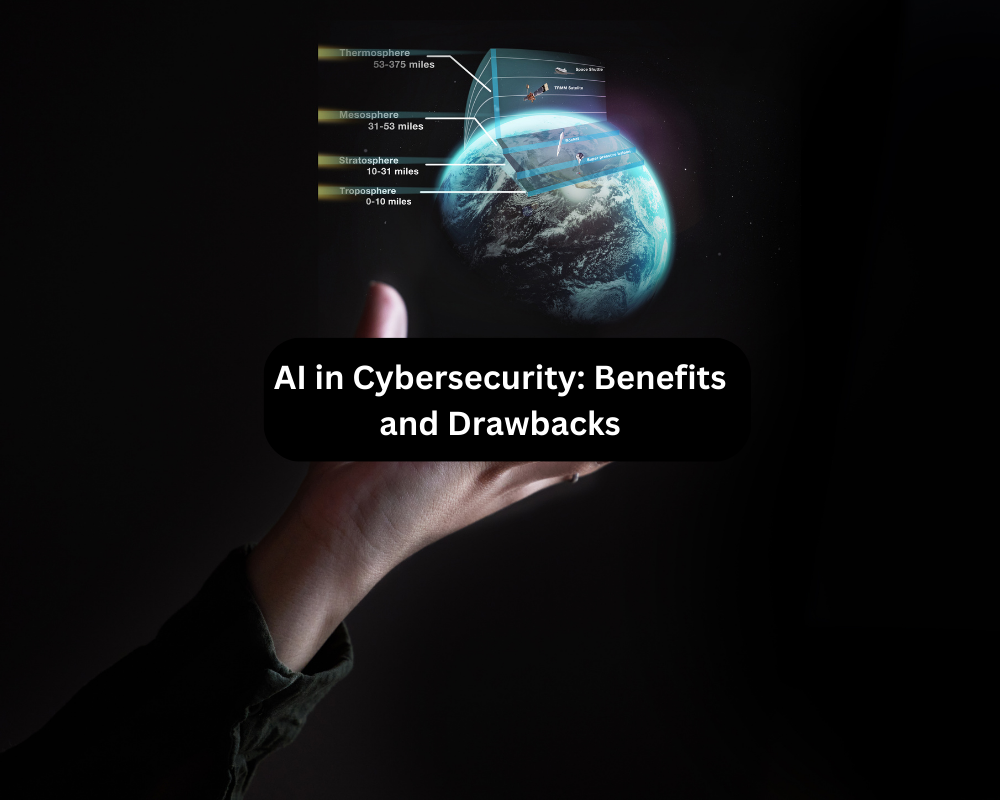
AI in Cybersecurity: Benefits and Drawbacks
Introduction
Artificial intelligence (AI) is making an impact on so many sectors, including cybersecurity. The AI allows businesses to detect and respond to cyber threats in new ways that can supplement the job of human cybersecurity professionals. On the other hand, AI also has its risks and limitations which should be taken into account. This article discusses the main benefits and drawbacks of using AI in cyber security.
How does AI work as a defense against Cyberattacks?
AI improves cybersecurity defense in two major ways – by automating threat detection and allowing quicker response.
AI algorithms can continuously monitor networks, hosts, clouds, and users to detect anomalies that are indicators of cyber threats. AI can process huge amounts of data very quickly and detect security risks before they grow to major damage. AI-based threat intelligence platforms tend to crawl the dark web to discover new attack tools. AI also offers user and entity behavior analysis to flag insider threats. Chatbots take advantage of natural language processing which is effective in detecting social engineering.
After threats have been identified, AI enables immediate action. This is done by parsing alerts, prioritizing the most important ones, and suggesting actions like shutting down a breached network. AI-enabled deception technology lays out traps designed to distract attackers. During attacks, AI algorithms can also learn by themselves in real time to recognize new attack patterns and update defenses. Through automation of manual tasks, AI lightens the load of security analysts to focus on high-level investigations.
AI becomes a force multiplier for human cyber defenders to deal with fast-changing threats. It has built-in self-learning features that provide proactive security for complex IT infrastructure.
Benefits of AI in Cybersecurity
Faster threat detection
One of the key advantages of AI in cybersecurity is its capacity to detect threats and anomalies faster than humans. Using huge amounts of data collected from networks and systems, AI algorithms can recognize cyberattacks as they happen. This enhanced detection speed enables swifter action to lessen the effects of breaches.
More accurate threat intelligence
Besides the speed, AI gives more precise data on cyber threats too. AI helps in analyzing vast data sets to identify patterns and produce threat intelligence that humans may miss. This allows the allocation of resources towards the highest risks.
As a recent Capgemini report shows, more than 69% of organizations say that AI improves their cybersecurity response by providing better analytic insights. The study listed productivity and efficiency as two of the key advantages of employing AI for cybersecurity.
Automating mundane tasks
AI tools will be able to perform many routine cybersecurity tasks thus reducing the time of the human analysts to focus on more valuable areas. One example is the automation of processes such as employee access monitoring, threat classification, vulnerability assessment, and simulated attacks for training. This enables more efficient use of skilled cybersecurity talent in organizations.
Read: Latest Escape Room Technology and Puzzle Mechanics
Drawbacks of AI in Cybersecurity
Susceptibility to adversarial attacks
One of the main problems is that adversaries can mislead the AI systems with specially picked inputs called adversarial examples. Just like humans, AI algorithms can be hacked into misclassifying the threats and providing illegitimate users with access. Continuous testing and validation are critical to make AI systems resistant to such attacks.
Bias and inaccuracies
As the AI systems learn from the data, the biases in the training data can result in blind spots. For example, bias towards detection of only existing attack signatures may lead to missed new attack vectors. Based on a Malicious AI report, bias is one of the biggest reasons why deploying AI for cybersecurity purposes is difficult for organizations. Humans need to check and verify the results of AI to avoid any unintentional bias or errors.
Lack of transparency
The “black box” nature of many AI systems makes it difficult to understand the reasons why AI predictions are made. This absence of transparency may limit trust in using AI to autonomously perform actions to combat cyber threats. Ethical issues also come up about how certain predictions are being made without a clear view of AI decision-making.
The incorporation of techniques like explainable AI is essential for enhancing trust and transparency in AI security systems.
Conclusion
AI provides promising possibilities to support human efforts in tackling cybercrime. However, it also needs careful design and supervision to address the major issues. In the future, AI Trends will become a crucial element in developing cybersecurity solutions that combine “the best of both worlds”. Organizations should analyze carefully both technical and ethical aspects when implementing AI for their cybersecurity needs. A strategic risk management approach can empower AI to better safeguard the digital space from dynamic cybersecurity threats.




